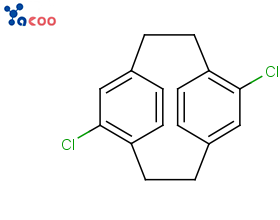Search Product
Structure Search
Search
Advantage Products
Location: Industrial Info
CAS:10366-05-9| The Application of Parylene C in sensor
Product Name:Parylene C
CAS: 10366-05-9
Molecular Formula: C16H14Cl2
Article No.: E0016
Structural Formula:

Product Introduction
Parylene C is mainly used as a high-purity passivation layer and dielectric layer in microelectronics and semiconductors. It can also be used as passivation, protection, lubrication and other coatings in microelectronics; In addition, it can also be used as isolation, solidification, and reinforcement materials in biomedical anti-corrosion and cultural relic protection.
Application of Parylene C
OECT is a three terminal device based on organic semiconductors, widely used in label free biosensing, such as dopamine, adrenaline, ascorbic acid, adenosine triphosphate, and cell activity detection. Organic electrochemical transistors, due to their use of organic semiconductors, which possess excellent ion and electron conduction properties, can form a large capacitance when using electrolytes as dielectric layers, effectively amplifying sensing signals. Their ultra-low driving voltage, good mechanical flexibility, and biocompatibility enable them to, This makes it of great research significance in sensing biological signals, including bioelectrical and biochemical signals. The existing technology has problems with complex processes and the need for further improvement in sensor sensitivity. Therefore, the CN116953041A patent provides a highly sensitive and fast responsive pH sensor and its working method. The specific preparation method is as follows:
(1) Provide a substrate, deposit an insulation layer on the substrate, and deposit an adhesive layer on the insulation layer to further adhere the source, drain, and gate on the surface of the insulation layer. After the deposition of the source, drain, and gate is completed, a microelectrode chip is prepared, and a passivation layer is further coated on the surface of the microelectrode chip as the initial device; Microelectrode chips include rigid microelectrode chips or flexible microelectrode chips, with channel through holes formed inside the microelectrode chips;
(2) Using 3,4-ethylenedioxythiophene and ionic liquid as electrolytes, an alternating current is applied to the initial device, and an organic semiconductor layer is formed by electro polymerization on the channel via of the microelectrode chip using the alternating current electrodeposition method;
(3) Using platinum as the counter electrode and standard calomel electrode as the reference electrode, the gate of the device obtained in step (2) is used as the working electrode. The gate is modified with PEDOT: BTB film on the device obtained in step (2). After modification, a highly sensitive and fast responsive pH sensor is obtained.
The passivation layer material is Parylene C, polyimide, benzocyclobutene, silicon dioxide or silicon nitride.
The method of the present invention is simple, efficient, and easy to implement. The organic semiconductor layer is prepared by alternating current electrodeposition, and the gate is modified by cyclic voltammetry. The pH sensor prepared has high sensitivity and short response time under specific working methods, and has broad application prospects in wearable electronic devices.
References
CN116953041A A highly sensitive and fast responsive pH sensor and its working method.












